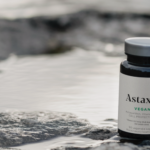In addition to supplements, astaxanthin is also found in algae, fish, and shellfish. Studies have shown that astaxanthin may have positive effects on our health. Here is a summary of everything you need to know about the antioxidant astaxanthin.
What is Astaxanthin?
Astaxanthin belongs to the carotenoid group, which are organic fat-soluble vitamins and pigments found in nature, such as in algae, fish, shellfish, and flamingos. These animals consume algae containing astaxanthin, contributing to their red color. Specific examples include salmon, crab, and lobster. Pure astaxanthin has a strong red color.
How does Astaxanthin work in the body?
Structurally, astaxanthin resembles a fatty acid. Both astaxanthin and other carotenoids are absorbed along with fat in the intestine. Therefore, it is best to consume astaxanthin with a meal that contains fat, as low fat intake significantly impairs absorption.
There are no documented side effects of astaxanthin at the recommended intake level when consumed with food. Studies have shown that optimal absorption is achieved when astaxanthin is taken with omega-3-rich foods such as fatty fish, walnuts, flaxseed oil, and canola oil.
Astaxanthin is an antioxidant that can neutralize harmful free radicals that cause oxidative stress. Several studies have shown that astaxanthin may have potential health benefits, including preventing the oxidation of fatty acids.
Curious to know more? Contact us and we’ll tell you more!



